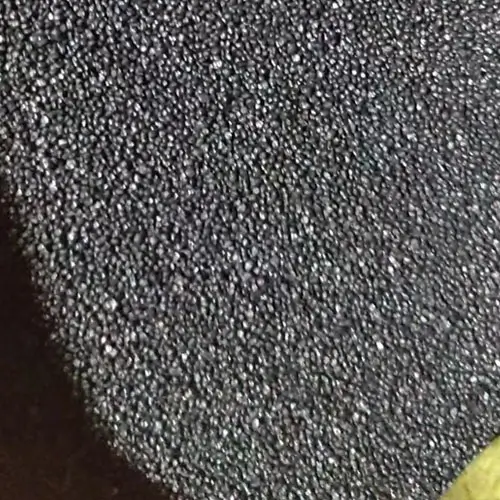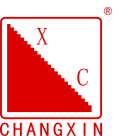Refractory castable is composed of refractory aggregate and matrix powder, adding a certain amount of binding agent and additives together. At the time of construction, water is added for mixing to make it have good fluidity, and further after molding and maintenance to make it coagulate and harden. Because of its high construction efficiency, simple production process and other advantages, refractory materials are widely used, from the iron and steel industry, ironmaking process of blast furnace, hot blast furnace, coke oven, to the steelmaking process of converter, continuous casting and other heating furnaces have been applied. In addition, they are also used in kilns in the cement and glass industries, as well as in incinerators and other locations that require high-temperature treatment.
While the main raw material in a refractory is crucial, the binding agent is an indispensable and important component. The role of the binding agent is to cement the aggregates and fines together for a certain period of time in order to obtain the appropriate release strength. The binding agent in the refractory material should not only meet a certain room temperature performance, but also make the castable material has a good high temperature performance, in addition, also need to consider whether the binding agent and the other substances in the castable material to react, produce low melting phase. There are many kinds of binding agents used in amorphous refractories, among which the commonly used ones are calcium aluminate cement, sol-gel and hydrated alumina.
1.Calcium aluminate cement bonded castable
Calcium aluminate cement is most widely used as a binding agent. However, as calcium aluminate cement is used, it inevitably introduces a certain amount of CaO, which combines with other oxides in the refractory mixture, leading to the formation of low co-melting point mixtures. For example, in systems containing silica, CaO and Al2O3 in calcium aluminate cement react with SiO2 micropowder added to the castables to form the low-co-melting point phases CAS2 and C2AS, which cause the slag resistance and high temperature performance of the castables to decrease. Therefore, in order to avoid the formation of liquid phase in the castables under high temperature conditions, improve the corrosion resistance and high temperature strength of the castables, and thus prolong the service life of the castables, low cement (1.0% ≤ W(CaO) ≤ 2.5%) and ultra-low cement (0.2% ≤ W(CaO) ≤ 1.0%) castables came into being. Although the introduction of CaO has been reduced and the high temperature performance of the castables has been optimized, their use in high temperature conditions is still limited because they are not completely free from the use of cement.
2.Sol-gel bonded castables
Cohesive binding generally refers to the binding of particles that are close in size by coalescing under the action of VanderWaals forces. Sol-gel bonding is a form of cohesive bonding. The reason why sols can be used as refractory binding agents is based on the sol-gel technology, and the network flocculation structure formed during the mixing of the mixture, which wraps and connects the aggregates in the refractory material to form a billet, thus providing demolding strength for the sol-bonded castables.
Silica sol is a colloidal solution formed when silica colloids are uniformly distributed in water, and silica sol bonding belongs to sol-gel bonding. The condensation reaction of silica sol is: -Si-OH+HO-Si-=-Si-O-Si-+H2O, which forms a network structure and thus provides strength. Silica sol-bonded castables have obvious advantages in mixing, low and medium temperature strength, sintering properties, volume stability, and high temperature strength. However, the demolding strength of silica-sol bonded castables after room temperature maintenance is low, so they cannot be widely used.
3.Hydrated alumina bonded castables
Hydrated alumina (ρ-Al2O3) is a kind of alumina (a crystalline form of alumina) that can be hydrated in contact with water and has poor crystallization properties. At room temperature, the hydration reaction occurs with water to form Bayerite Al(OH)3 and Böhmite sol AlOOH. both Bayerite and Böhmite sol have cementing and hardening effects, which provide strength to the hydrated alumina-bonded castables. At elevated temperatures, Al(OH)3 and AlOOH are eventually converted to α-Al2O3, so that the hydrated alumina-bonded castables have high high-temperature strength.
When used in systems containing silica, the introduction of CaO is avoided and the liquid phase generation temperature of the castables is increased, resulting in castables with higher high temperature strength. In systems that do not contain silica (e.g., aluminum-magnesium castable precast blocks for ladle liners), the hydrated alumina ultimately converts to α-Al2O3 at high temperatures, which reacts with the MgO in the system to produce magnesium-aluminum spinel that is resistant to corrosion and has a high melting point, resulting in better high-temperature performance and improved resistance to corrosion. In addition, hydrated alumina bonded castables can absorb a large amount of CaO in the slag, making the slag alkalinity decrease, but also formed a dense layer of CA6, blocking CaO to further penetrate into the material, thus enhancing the material’s resistance to slag penetration.
However, hydrated alumina as a binding agent also has certain drawbacks, for example, hydrated alumina-bonded castables have low raw strength, i.e., the castables have low demolding strength. In addition, in the baking process, the hydration product of hydrated alumina bonded castables is rapidly dehydrated in a short temperature range, and its apparent porosity is low, and with the increase of temperature, the apparent porosity remains unchanged, so the permeability is poor, and the resistance to bursting is poor.

